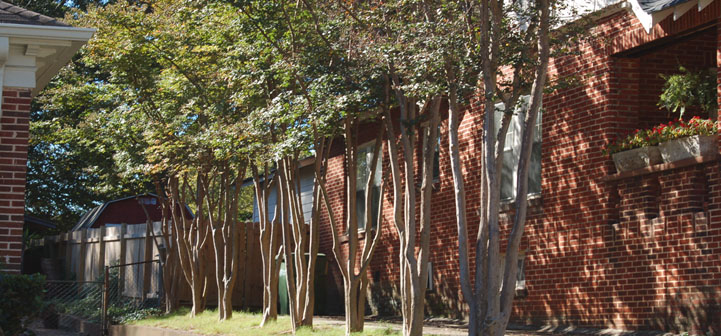Reviewed and Revised on 10/30/2013
The benefits of installing a heat exchanger in a home include improved moisture removal, decrease in the potential of structural damage, elimination of harmful pollutants, and reduced energy costs. The resulting improved indoor air quality can affect the home occupants and their health in a positive manner. Installation also increases the resale value of the home.
A simple payback calculation, where the energy savings pay for the purchase and installation of a heat exchanger showing the cost-effectiveness of doing this are given below.
Example of Cost Effectiveness
The following set of equations shows the cost-effectiveness of an air-to-air heat exchanger installed in a home with low infiltration levels in Fargo, N.D. It is assumed for the sake of calculations that the following conditions exist:
-
Floor area: 1500 square feet (ft2)
-
Number of bedrooms: 3
-
Infiltration rate: 0.1 air exchanges per hour (ACH) or 10 hours for a complete air exchange
-
Fuel oil cost per gallon $3.80
-
Electricity cost per kilowatt-hour (kwh): $0.10
Standard recommended ventilation rates have been set by the American Society of Heating, Refrigerating, and Air Conditioning Engineers (ASHRAE Standard 62.2-2007). These standards do not take into account special circumstances such as specific sensitivities or hobbies that create air quality issues. Standards vary according to the building, its use, and the number of occupants (ASHRAE Standard 62.2-2007). NOTE: The utility rates for fuel and electricity vary, and must be adjusted for local costs along with the floor area and number of bedrooms.
Calculations
For a private home, the number of bedrooms determines the typical number of occupants.
In the example, a 3 bedroom home has an occupant level of four, or the number of bedrooms plus one. To determine the standard recommended ventilation airflow rate, the following formula is used:
Recommended ventilation rate = (0.01 x floor area, square feet) + 7.5 (number of bedrooms + 1)
Ventilation rate of example = (0.01 x 1500 sq. ft.) + 7.5 (3 bedrooms + 1) = 45 cubic feet per minute
The ventilation airflow rate is often expressed as cubic feet per minute (cfm).
The standard recommended ventilation rate is 45 cfm for this example home. Using a heat exchanger to warm this air to the indoor temperature recovers heating costs associated with warming the cold air to room temperature. The exact amount of energy depends, of course, on the difference in temperature between outside and inside air.
A measure of this is a heating degree day (HDD).
Commonly, an HDD is calculated by taking the mean difference between 65°F and the average daily temperature. The various weather agencies around the state have tables of normal HDDs for a given area. For this example, Fargo, N.D., with an HDD of 9000 is used.
The equations for determining the amount of energy saved (Btu) in a year use the cfm, HDD, the efficiency rating of the heat exchanger (EF), and a constant for the specific heat and specific weight of air (25.92). Heating degree day data can be found at the [National Climatic Data Center]. The formula is as follows:
-
Heat saved each year (Btu) = cfm x HDD x EF x 25.92
-
Btu – British thermal units
-
Cfm – ventilation airflow rate in cubic feet per minute
-
HDD – heating degree day
-
EF – heat exchanger efficiency
-
25.92 – constant for specific heat and weight of air
Using 45 cfm and 9000 HDD, the heat energy saved by a 70% efficient heat exchanger would be:
Heat energy saved = 45 x 9000 x 0.70 x 25.92 Heat energy saved = 7,348,320 Btu per year
An exchanger needs a defrost control to keep ice from forming. Defrosting is generally done using an electric resistant heater. This electric cost needs to be subtracted from the energy savings cost. The cost can be determined using the following formula:
Cost of defrosting = power consumed by defrost device x hours of operation x cost of electricity
Assuming a 70-watt (W) heater, 500 hours of operation per year at temperatures below freezing and $.10 per kwh, the electric cost to operate the defroster, after converting watts to kilowatts (kW), is:
Cost = 70W x 500 hours per year x 1kW/1000W x $0.10/kwh = $3.50 per year
In this example, in a cold climate using fuel oil to heat the home, the cost per year to operate the heat exchanger is $3.50. The above formulas can be used to estimate the cost of operation in other climates and situations.
Determining Fuel Savings and Payback Period
To determine the money saved, the total heat energy is divided by the Btu content and the efficiency of the furnace.
Gallons per year = Heat Energy Saved per year/(Btu content per gallon x efficiency of fuel)
Using fuel oil as an example, it has 140,000 Btu per gallon and assuming a fuel oil furnace has an efficiency of 65% (.65). Using these numbers, we can determine the fuel saved each year.
Gallons per year = 7,348,320 Btu per year/140,000 Btu per gallon x .65 = 81 gallons saved per year.
Multiplying this by the cost of fuel oil and subtracting the defrost heat gives the total savings.
Cost savings = (gallons saved x cost per gallon) – cost to defrost
Using the values calculated previously and a cost of $3.80 per gallon of fuel oil, the savings each year would be:
Cost savings = (81 gallons per year x $3.81 per gallon) – $3.50 cost of defrosting = $304.30 savings per year
Given purchase, installation and miscellaneous costs of $1500, a simple payback method shows the number of years an air-to-air heat exchanger pays for itself in saved heating costs.
Years to payback exchanger = Purchase cost/cost savings
Years to payback exchanger = $1500 purchase cost/$304.30 yearly savings = 4.9 years
Additional Information Air-to-Air Heat Exchangers for Healthier Energy Efficient Homes
